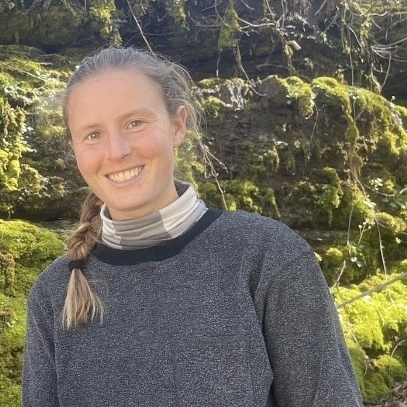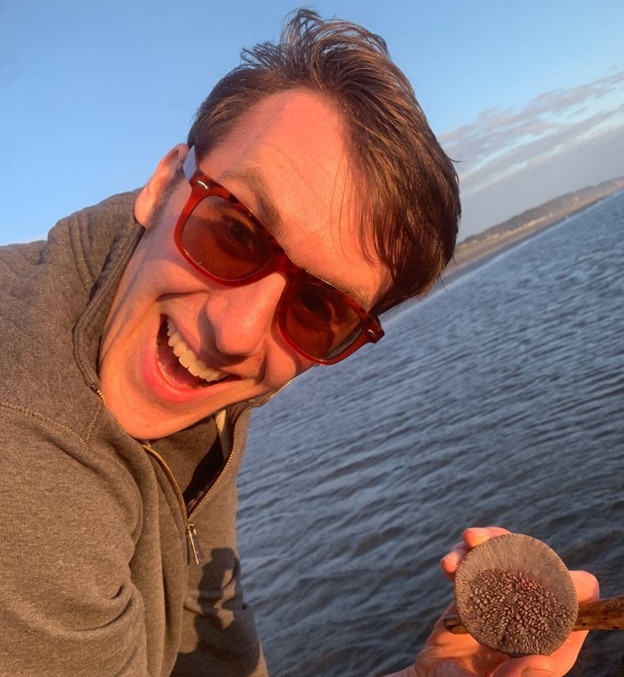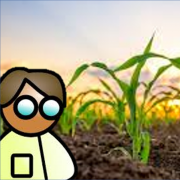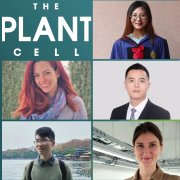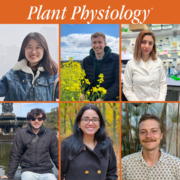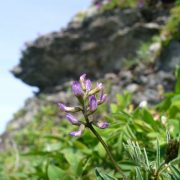2024 Plant Direct Author Features (Fifth Edition)
Behind manuscripts are researchers, professors, professionals and students dedicated to advancing the field of plant science. You’ve seen our First Authors on Bluesky, Twitter, and Facebook— now, read more about why they chose to pursue plant sciences and click on the links below the pictures to read their articles.
Yunus Sahin
Yunus Sahin is the First Author of GABA promotes peroxisome proliferation in Triticum monococcum leaves published 04 October 2024.
Sahin is a Postdoctoral research associate at University of Georgia. eDUCATION BACKGROUND INCLUDES: 2022 Ph.D Biology at Abant Izzet Baysal University, 2016 MSc in Biology at Bolu Abant Izzet Baysal University, 2013 Biology at Bolu Abant Izzet Baysal University. Research interests include Plant genetics, Bioinformatics, Abiotic stress. Personal interests include workout, tennis, running and hiking.
“My interest in plant science grew from an early fascination with the natural world, particularly the diversity and complexity of plants. I was always curious about how plants could thrive in different environments, adapt to challenges, and play such an essential role in ecosystems. This curiosity deepened when I took a biology course in school that explored plant physiology and ecology. I love plant science because it allows me to explore the foundation of life on Earth and understand the intricate processes that plants undergo. There’s something profoundly rewarding about uncovering how plants grow, adapt, and contribute to the sustainability of the planet. Plus, plant science is essential for addressing global challenges like food security, climate change, and biodiversity conservation.
I’ve been fortunate to have inspiring mentors throughout my journey. In university, my professor in molecular biology not only shared his knowledge but also demonstrated how plant research can be applied to solve real-world problems.
I first fell in love with plants during a vacation in the Mediterranean region of Turkey. Seeing the wide array of plant life, from the trees to delicate wildflowers, sparked my wonder.”
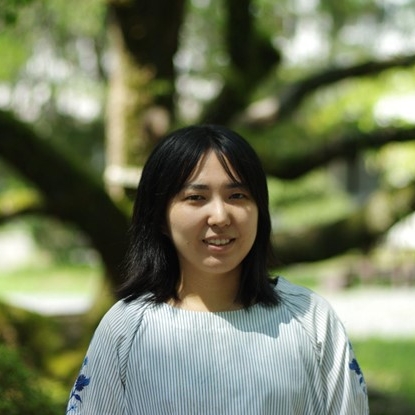 Megumi Matsuzawa
Megumi Matsuzawa
Megumi Matsuzawa (she/her) is the First Author of Systematic Expression analysis of Cysteine-rich secretory proteins, Antigen 5, and Pathogenesis-related1 protein (CAP) superfamily in Arabidopsis published 9 October 2024. She is a Ph.D. student at Kyoto Prefectural University. Education background includes 2023 MSc in Biology at Kyoto Prefectural University 2021 BSc in Biology at Kyoto Prefectural University. Research interests include Plant development, morphogenesis. Personal interests include Watching baseball games.
“Plants, being immobile, possess highly complex mechanisms to sustain their lives. I’m very interested in those mechanisms. I believe it could be beneficial to us humans. I’m mentored by Professor Sato and Associate Professor Hirano, and I’m always supported by lab members and family. I have loved biology classes since I was in junior high school. In high school and university, I studied biology at the cellular and molecular levels, which deepened my passion for the subject.”
Sate Ahmad
Sate Ahmad (he/him) is the First Author of Lower grass stomatal conductance under elevated CO2 can decrease transpiration and evapotranspiration rates despite carbon fertilization published 20 October 2024. Admad is a Senior Research Fellow (in Hydroecology) at Trinity College Dublin. Education background includes: 2021 Doctorate (Soil Physics) / Dr. agr. at University of Rostock (Germany); 2016 MSc. in Applied Ecology at Universities of Poitiers (France) and Coimbra (Portugal); 2014 Master in Natural Resources and Environmental Management at North South University (Bangladesh), 2011 BSc. in Environmental Science at North South University (Bangladesh).
Research interests include plant-water-soil interactions, wetland hydroecology, restoration ecohydrology, ecophysiology, evapotranspiration, soil-hydrological processes. Personal interests include cooking Bangladeshi food in large amounts and feeding friends.
“During my undergraduate studies, my fascination with plants began to take shape. One particularly memorable experience was during a study trip for a course on Forest Management taught by the late Junaid K. Choudhury. I was in awe of his ability to identify species effortlessly, and when asked how he could do it so quickly, he replied, “It’s just like how you can recognize a person.” That moment left a lasting impression on me.
My first real opportunity to work with plants came when I encountered a population of Typha elephantina (locally known as ‘Hogla’) growing near a construction site (formerly a wetland) in Dhaka, Bangladesh. Inspired by research on the potential of other Typha species to remove heavy metals, I wanted to test whether this species could remediate arsenic-contaminated water as part of my master’s thesis. However, just as I began lab work, I was offered a research position at an environmental health research institute, forcing me to abandon the project due to a lack of lab access.
My interest in plant science deepened during my Erasmus Mundus MSc in Applied Ecology in Europe. In the Limousin region of France, I was introduced to bogs (rainfed peatlands), sparking a passion for wetland research. This ultimately led me to Kiel, Germany, where my master’s thesis focused on how different management regimes affect vegetation structure and evapotranspiration (ET) rates in fens (groundwater-fed peatlands), gaining much knowledge from Prof. Joachim Schrautzer. From there, my research expanded, taking me to the temperate fens in Mecklenburg-West Pomerania, Germany, as part of my PhD, where I worked on coastal flood mires, and through-flow fens together with Dr. Haojie Liu, who was an exceptional mentor throughout my journey.
Eventually, I was recruited as a senior research fellow at Trinity College Dublin at the Disciplines of Botany (Prof. Jennifer McElwain) and Environmental Engineering (Prof. Laurence Gill) to explore evapotranspiration at multiple scales from plants to catchments in Ireland. My mentors provided me with an invaluable opportunity to delve into the world of plants and water which in turn paved the way for me to investigate and integrate plant-water interactions with approaches borrowed from several disciplines, disciplines which often suffer from the ‘silo effect’.
Examples include utilizing data from chamber experiments and comparing transpiration rates determined through plant-science methods (stomatal conductance measurements, etc.) with water-balance-based evapotranspiration estimates in perennial ryegrass (Lolium perenne), and comparing canopy conductance with potential ET, determined through meteorological methods, estimated using hydrological approaches in basket willows (Salix viminalis). These efforts would not have been possible without collaboration across diverse fields, including environmental engineering, plant physiology, paleobotany, and geochemistry.
Thanks to the intellectual freedom I’ve been granted at Trinity College Dublin, I was able to apply for and secure a grant to study alkaline fens in Ireland. This research investigates how peat formation and plant diversity shapes microtopography and influences spatial relationships of peat hydrophysical properties and carbon storage. Through this work, I continue to deepen my understanding of plant–water interactions in peatlands while building interdisciplinary collaborations that bridge gaps between ecology, hydrology and soil science. Ultimately, my goal is to develop a state-of-the-art research group focusing on ecosystem restoration and landscape ecology in the face of habitat fragmentation and climate and land-use change.”
 Alexander G. Freidinger
Alexander G. Freidinger
Alexander G. Freidinger (he/him) is the First Author of Cycling DOF Factor mediated seasonal regulation of sexual reproduction and cold response is not conserved in Physcomitrium patens published 25 November 2024.He is currently an Internal Medicine Resident at the University of Virginia.Education background includes: 2024 MD at Chicago Medical School at Rosalind Franklin University of Medicine and Science, 2016 BA Spanish Literature at Kenyon College.
Research interests include Circadian rhythms, computational genomics, and resuscitation science. Personal interests include Fly fishing, cooking/baking, running.
“I first fell in love with science during high school when we were learning about hydrogen bonding in AP Biology. It was then that I began to see how science was able to explain the natural world around us and our interactions with the world. This interest spurred me to get involved with plant science research during undergrad and to study medicine. My time conducting research on plants was a formative and educational experience that helped develop my skills as an investigator and clinician.”
Kristina Kirilova Gagalova
Kristina Kirilova Gagalova (she/her) is the First Author of Leaf pigmentation in Cannabis sativa: characterization of anthocyanin biosynthesis in colorful Cannabis varieties published 25 November 2024. She is a Research fellow at Curtin University and the Centre for Crop and Disease Management. Education background includes 2022 PhD Bioinformatics at University of British Columbia, 2015 MSc in Bioinformatics at Vrije University of Amsterdam, 2013 MSc in Molecular Biotechnologies at the University of Bologna, 2010 BSc in Biotechnologies at the University of Bologna.Research interests include Bioinformatics software, Plant genomics, Gene family evolution, Metabolomics. Personal interests include Reading, travelling.
“My passion for science began in high school biology classes and deepened during university, where I was fortunate to work in an exceptional laboratory at the University of Bologna, learning from leading scientists in Biotechnology. I’m still in touch with my master’s thesis mentors, who have supported me throughout my career. My passion for plant science began while studying forestry genomics at the University of British Columbia, where the complexity of spruce giga-genomes sparked my fascination with plant genetic evolution. This interest deepened throughout my PhD, where I’ve been guided by mentors who balance analytical rigor with creativity, and who emphasize perseverance and collaboration. Their guidance has shaped my scientific approach, and mentors have played a crucial role in my success in science, encouraging me to express my ideas and grow in my work.”
Kanjana Laosuntisuk
Kanjana Laosuntisuk is the First Author of An Arabidopsis Cell Culture with Weak Circadian Rhythms under Constant Light Compared with Constant Dark can be Rescued by ELF3 published 28 November 2024. Laosuntisuk is a Postdoctoral researcher in the Department of Biochemistry, Faculty of Medicine Siriraj Hospital, Mahidol University, Thailand.
Education background includes 2022 Ph.D in Biochemistry at North Carolina State University, USA; 2018 MS in Biochemistry at North Carolina State University, USA; 2016 BSc in Biology at Silpakorn University, Thailand.Research interests include Plant molecular biology, abiotic stress, circadian rhythm.Personal interests include crochet.
“My interest in plant science began when I saw a big tree growing by the roadside and wondered how it survived in harsh environmental conditions. This curiosity led me to major in plant biology and join Dr. Colleen Doherty’s lab at NC State, where I explored the molecular responses of plants to abiotic stress. Dr. Doherty’s expertise in plant circadian rhythms further inspired me to study the relationship between circadian rhythm and plant response to abiotic stress. In this publication, we investigated circadian rhythms in Arabidopsis cell suspension cultures, aiming to establish them as a model for circadian rhythm studies. Instead, we discovered intriguing oscillatory behavior in the cell line under different light and temperature conditions.”
Kaukab Razi
Kaukab Razi (she/her) is the First Author of Exploring the Role of Grafting in Abiotic Stress Management: Contemporary Insights and Automation Trends published 15 December 2024.Her current position is Biology Faculty. Education background includes Ph.D Plant Molecular Physiology at VIT University. Research interests include Abiotic stress, Plant Physiology, Plant Biochemistry, Molecular Biology. Personal interests include Working out and going out into nature walks.
“Earning a Ph.D in plant science allowed me to delve into the depth of plant molecular biology paving the way for other groundbreaking discoveries and translational applications”
Margo Goldfarb
Margo Goldfarb (she/her) is the First Author of Synthesis of β-alanine from isoleucine and propionate catabolism via aminotransferases published 18 December 2024. She is a PhD candidate at Vanderbilt University. Education background includes a 2020 BA in Chemistry at Kenyon College. Research interests include structural biology, protein engineering, enzymology
Personal interests include soccer, ultimate frisbee, equestrian sports.
“As an undergraduate, I discovered my passion for science while working in Dr. Kerry Rouhier’s lab where I studied branched-chain amino acid metabolism in Arabidopsis. My four years doing undergraduate research under Dr. Rouhier’s mentorship culminated in my senior honors thesis project which ultimately led me to pursue my PhD at Vanderbilt University where I am currently studying ways to engineer glycan binding proteins.”
John Hadish
John Hadish is the First Author of Transcriptomics of long-term, low oxygen storage coupled with ethylene signaling interference suggests neofunctionalization of hypoxia response pathways in apple (Malus domestica) published 20 December 2024. Hadish is a Postdoctoral Researcher at Washington State University.
Education background includes 2016 BA at Luther College Decorah, IA; 2023 Ph.D. Molecular Plant Sciences at Washington State University Pullman, WA. Research interests include Evolution, Large Data. Transcriptomics, Breeding. Personal interests include Running and Gardening.
“I have been interested in plants since I was young and my father would take me on plant walks through the woods. This love of plants was enforced over my years of education which led me to pursue a Ph.D. in Molecular Plant Sciences. Working with big data to solve problems in plant science excites me because of all the interesting hypotheses it can generate. My future career will focus on bridging the gap between large data and applied plant science.”







